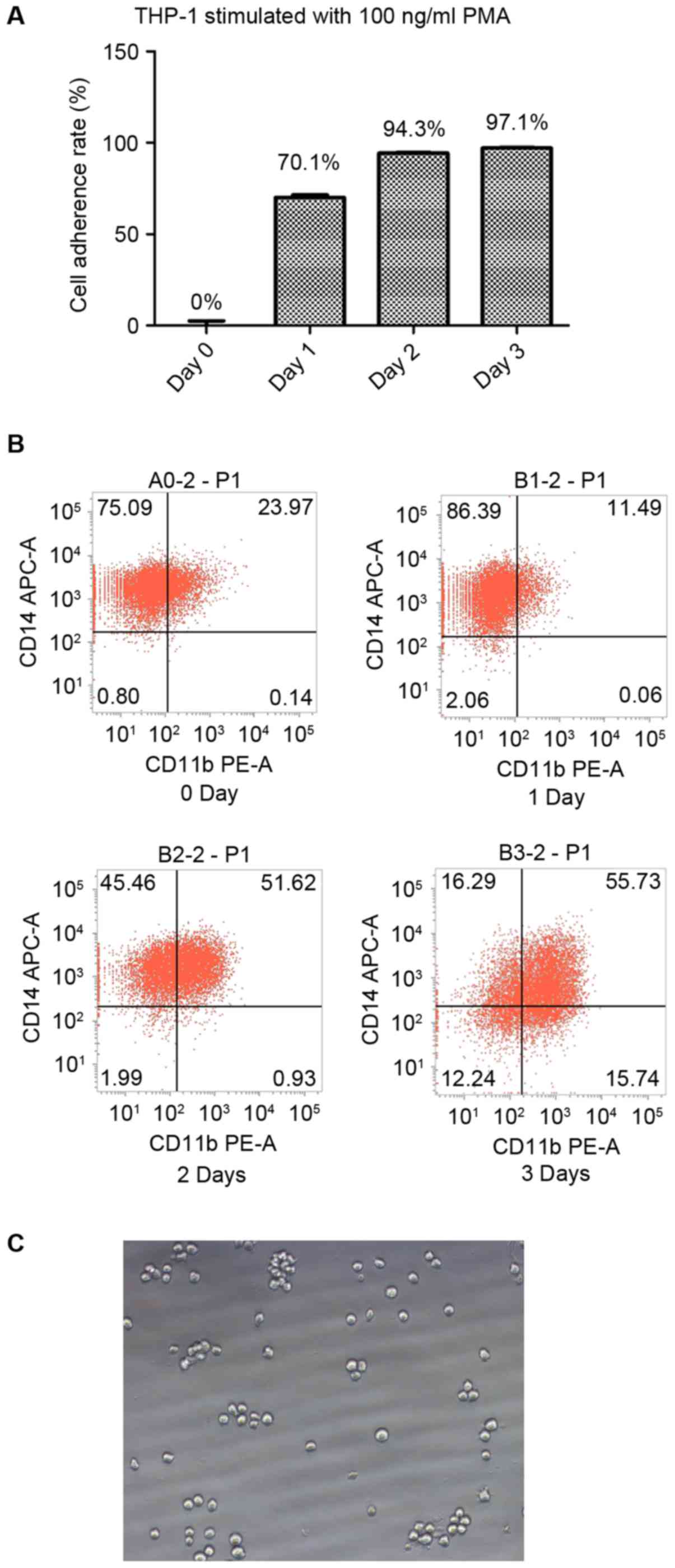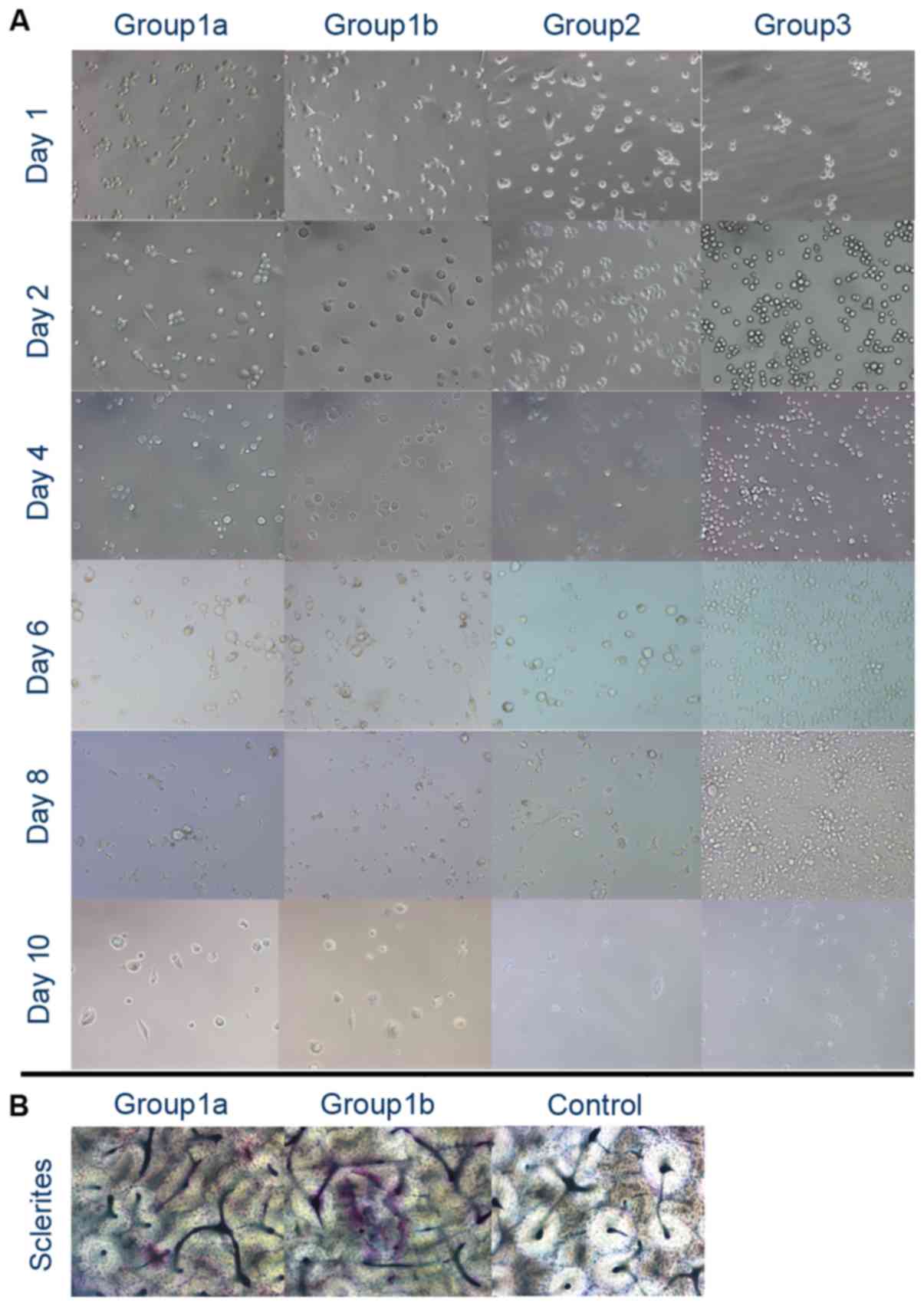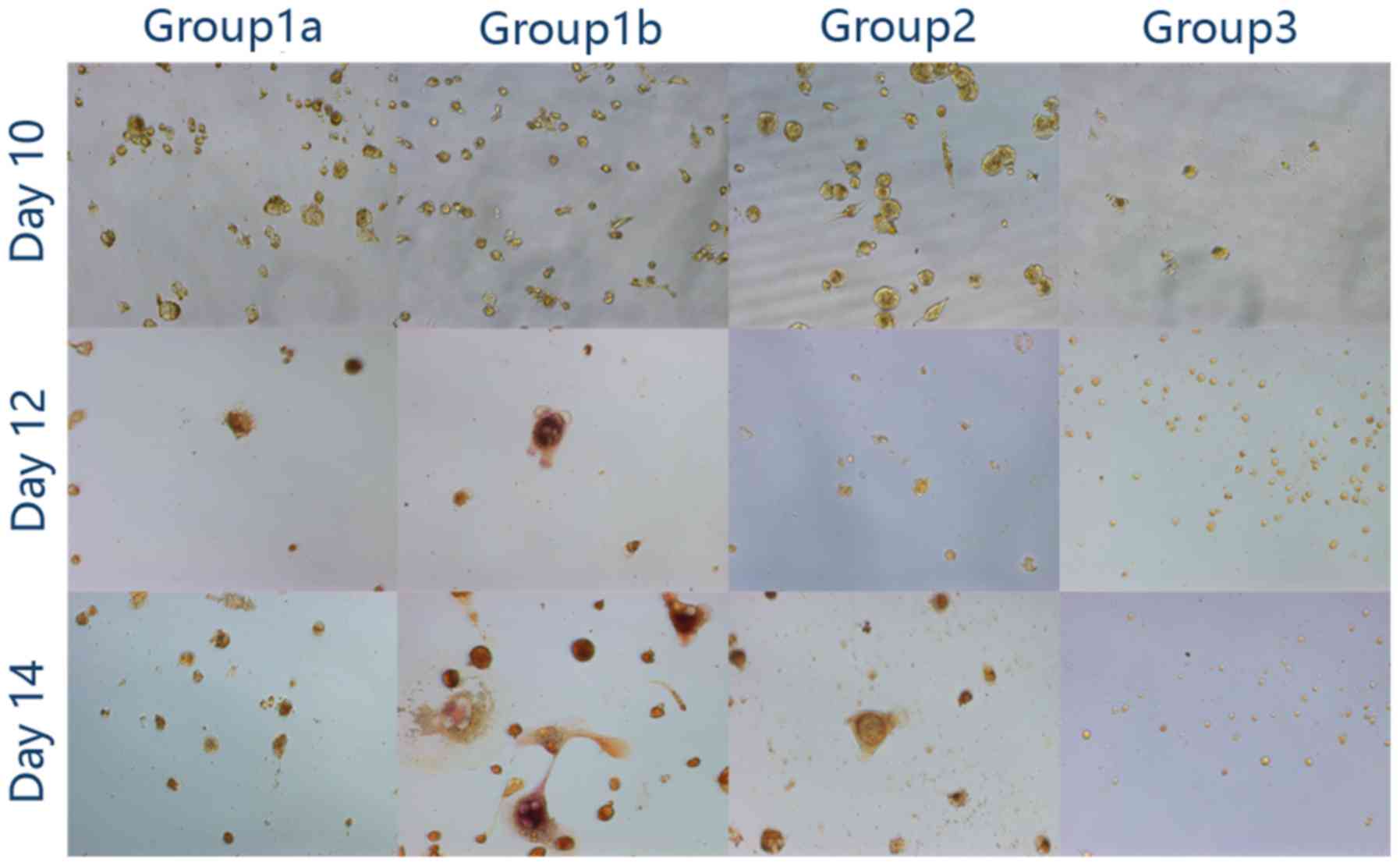|
1
|
Soares-Schanoski A, Gómez-Piña V, del
Fresno C, Rodríguez-Rojas A, García F, Glaría A, Sánchez M,
Vallejo-Cremades MT, Baos R, Fuentes-Prior P, et al:
6-Methylprednisolone down-regulates IRAK-M in human and murine
osteoclasts and boosts bone-resorbing activity: A putative
mechanism for corticoid-induced osteoporosis. J Leukoc Biol.
82:700–709. 2007. View Article : Google Scholar : PubMed/NCBI
|
|
2
|
Charles JF and Aliprantis AO: Osteoclasts:
More than ‘bone eaters’. Trends Mol Med. 20:449–459. 2014.
View Article : Google Scholar : PubMed/NCBI
|
|
3
|
Sloan AJ, Taylor SY, Smith EL, Roberts JL,
Chen L, Wei XQ and Waddington RJ: A novel ex vivo culture model for
inflammatory bone destruction. J Dent Res. 92:728–734. 2013.
View Article : Google Scholar : PubMed/NCBI
|
|
4
|
Flecher X, Rolland C, Rixrath E, Argenson
JN, Robert P, Bongrand P, Wendling S and Vitte J: Local and
systemic activation of the mononuclear phagocyte system in aseptic
loosening of total hip arthroplasty. J Clin Immunol. 29:681–690.
2009. View Article : Google Scholar : PubMed/NCBI
|
|
5
|
Crump TB, Wimmer KL, Reinhardt AL, Schmid
MJ, Meyer CR, Robinson DH, Marx DB, Bhattacharyya I and Reinhardt
RA: Effects of locally-delivered human macrophage products and
estrogen on murine inflammatory bone resorption. J Periodontal Res.
37:101–109. 2002. View Article : Google Scholar : PubMed/NCBI
|
|
6
|
Lee HP, Lin YY, Duh CY, Huang SY, Wang HM,
Wu SF, Lin SC, Jean YH and Wen ZH: Lemnalol attenuates mast cell
activation and osteoclast activity in a gouty arthritis model. J
Pharm Pharmacol. 67:274–285. 2015. View Article : Google Scholar : PubMed/NCBI
|
|
7
|
Kawamura H, Arai M and Togari A:
Inhibitory effect of chlorpromazine on RANKL-induced
osteoclastogenesis in mouse bone marrow cells. J Pharmacol Sci.
117:54–62. 2011. View Article : Google Scholar : PubMed/NCBI
|
|
8
|
Ueki Y, Lin CY, Senoo M, Ebihara T, Agata
N, Onji M, Saheki Y, Kawai T, Mukherjee PM, Reichenberger E and
Olsen BR: Increased myeloid cell responses to M-CSF and RANKL cause
bone loss and inflammation in SH3BP2 ‘cherubism’ mice. Cell.
128:71–83. 2007. View Article : Google Scholar : PubMed/NCBI
|
|
9
|
Jung YK, Han SW, Kim GW, Jeong JH, Kim HJ
and Choi JY: DICAM inhibits osteoclast differentiation through
attenuation of the integrin αVβ3 pathway. J Bone Miner Res.
27:2024–2034. 2012. View Article : Google Scholar : PubMed/NCBI
|
|
10
|
Petrova NL, Petrov PK, Edmonds ME and
Shanahan CM: Novel use of a Dektak 150 surface profiler unmasks
differences in resorption pit profiles between control and Charcot
patient osteoclasts. Calcif Tissue Int. 94:403–411. 2014.
View Article : Google Scholar : PubMed/NCBI
|
|
11
|
Uchiyama S and Yamaguchi M: Inhibitory
effect of beta-cryptoxanthin on osteoclast-like cell formation in
mouse marrow cultures. Biochem Pharmacol. 67:1297–1305. 2004.
View Article : Google Scholar : PubMed/NCBI
|
|
12
|
Park EK, Jung HS, Yang HI, Yoo MC, Kim C
and Kim KS: Optimized THP-1 differentiation is required for the
detection of responses to weak stimuli. Inflamm Res. 56:45–50.
2007. View Article : Google Scholar : PubMed/NCBI
|
|
13
|
Tundup S, Srivastava L, Nagy T and Harn D:
CD14 influences host immune responses and alternative activation of
macrophages during Schistosoma mansoni infection. Infect Immun.
82:3240–3251. 2014. View Article : Google Scholar : PubMed/NCBI
|
|
14
|
Yang RF, Zhao GW, Liang ST, Chen HZ and
Liu DP: Lysine-specific demethylase 1 represses THP-1
monocyte-to-macrophage differentiation. Chin Med Sci J. 28:82–87.
2013. View Article : Google Scholar : PubMed/NCBI
|
|
15
|
Pivetta E, Wassermann B, Bulian P, Steffan
A, Colombatti A, Polesel J and Spessotto P: Functional
osteoclastogenesis: The baseline variability in blood donor
precursors is not associated with age and gender. Oncotarget.
6:31889–31900. 2015. View Article : Google Scholar : PubMed/NCBI
|
|
16
|
Ritchlin CT, Haas-Smith SA, Li P, Hicks DG
and Schwarz EM: Mechanisms of TNF-alpha- and RANKL-mediated
osteoclastogenesis and bone resorption in psoriatic arthritis. J
Clin Invest. 111:821–831. 2003. View Article : Google Scholar : PubMed/NCBI
|
|
17
|
Wang Y, Dong G, Jeon HH, Elazizi M, La LB,
Hameedaldeen A, Xiao E, Tian C, Alsadun S, Choi Y and Graves DT:
FOXO1 mediates RANKL-induced osteoclast formation and activity. J
Immunol. 194:2878–2887. 2015. View Article : Google Scholar : PubMed/NCBI
|












